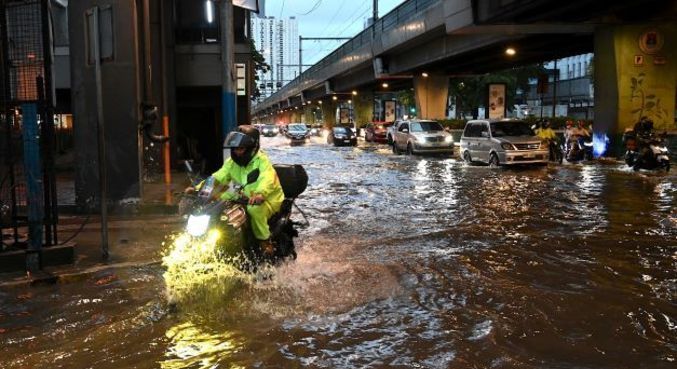Tropical Storm Nalgi hit the Philippines, killing more than 45
3 min read
Tropical Storm Nalgi hit the Philippines on Saturday (29) after causing floods and landslides that left more than 45 people dead, according to an official statement.
The cyclone hit Luzon, the main island in the archipelago, with maximum winds of 95 kilometers per hour, an hour after it hit the sparsely populated island of Catanduanes before dawn.
The devastation began much earlier, as torrential rains inundated mostly rural areas of the southern island of Mindanao on Thursday, followed by deadly mudslides and floods on Friday.
Civil defense authorities drastically reduced the death toll on Saturday from 72 to 45 and reported 40 deaths in Mindanao, while five people died in other parts of the country.
Heavy rains caused landslides and debris-laden floods that washed away entire families in some areas.
Rescue teams focused on the southern city of Kosice. Excavations have removed large portions of a thick layer of gray limestone and brown clay while anxious relatives await the news.
Parts of a nearby mountain in the city collapsed on Friday and 14 bodies have already been recovered. There are many missing persons.
“It could be more than a hundred,” Datu Odin Sinsuat, mayor of Datu Odin Sinsuat, told AFP when asked about the death toll.
“This is really a recovery process because the city was buried under rocks and mud for more than a day,” regional civil defense chief Najib Senarimbo told AFP, preferring not to estimate the death toll.
Flooding has also been reported in the central Philippines, although no deaths have been reported in the area.
“Why so many victims?”
Footage released by the Coast Guard showed rescue workers using a refrigerator as a makeshift boat to evacuate children from a flooded community on the central island of Leyte.
The weather service warned that Nalgi could still hit the capital, Manila, a city of more than 13 million people, with “heavy and sometimes heavy rain.”
He added that widespread flooding and landslides are expected due to the rain, although there is little risk of big waves in coastal areas.
“Based on our expectations, this hurricane is very strong, so we have to be well prepared,” said Raffaeleto Alejandro, National Director of Civil Defense.
The official also urged residents in the path of the storm to stay indoors. “If it is not necessary or important, we should avoid going out today (Saturday) because it is dangerous,” he warned.
Philippine President Ferdinand Marcos Jr. He reprimanded civil defense and local authorities in a televised meeting on Saturday over the high death toll in Mindanao.
“It will be important for us to look back and see why this happened. Why don’t we get them out of there? Why do we have so many deaths?” the president asked.
More than 7,000 people were evacuated before the typhoon made landfall, according to the Civil Defense.
The Civil Aviation Bureau said it has so far canceled more than 100 flights.
The cyclone hit the start of a long weekend marking the country’s Day of the Dead, as millions visit the graves of their loved ones.
The Philippines experiences an average of 20 major storms each year, killing hundreds and keeping large areas in perpetual poverty. Scientists warn that these storms are getting stronger as global warming increases.

“Devoted food specialist. General alcohol fanatic. Amateur explorer. Infuriatingly humble social media scholar. Analyst.”




